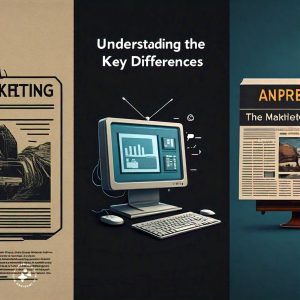In today’s digital age, businesses have a plethora of options when it comes to promoting their products and services. Among the most prominent strategies are content marketing and traditional advertising. While both aim to reach and engage audiences, they operate on fundamentally different principles and have distinct advantages and disadvantages. Understanding these differences is crucial for crafting an effective marketing strategy tailored to your business goals. In this article, we delve into the contrasting characteristics of content marketing and traditional advertising, shedding light on their respective strengths and weaknesses.
Defining Content Marketing and Traditional Advertising:
Content marketing involves creating and distributing valuable, relevant, and consistent content to attract and retain a clearly defined audience. This content can take various forms, including blog posts, videos, social media posts, podcasts, and more. The primary goal of content marketing is to provide value to consumers, build trust, and ultimately drive profitable customer action.
On the other hand, traditional advertising refers to promotional messages delivered through conventional channels such as television, radio, print media, billboards, and direct mail. These advertisements are often interruptive in nature, aiming to capture the audience’s attention and persuade them to purchase a product or service.

Contrasting Characteristics:
- Engagement vs. Interruption:
- Content marketing focuses on engaging audiences by delivering valuable and relevant content that aligns with their interests and needs. Rather than interrupting consumers with sales pitches, content marketers aim to establish a relationship based on trust and credibility.
- Traditional advertising relies on interruptive techniques to capture attention and deliver brand messages. While effective at reaching a wide audience, traditional ads are often seen as intrusive and may be disregarded or skipped by viewers.
- Longevity and Evergreen Value:
- Content created as part of a content marketing strategy often has longevity and evergreen value. High-quality content can continue to attract and engage audiences long after it’s been published, providing ongoing benefits in terms of brand visibility and authority.
- Traditional advertisements typically have a limited lifespan and may lose relevance quickly, especially in fast-paced environments such as television or radio. Once the ad campaign ends, its impact diminishes, requiring businesses to invest continuously in new advertisements to maintain visibility.
- Cost and ROI:
- Content marketing can offer a higher return on investment (ROI) over time, as valuable content can attract organic traffic, generate leads, and foster customer loyalty without the ongoing expense of paid advertising. However, content marketing requires a significant upfront investment in creating quality content and building an audience.
- Traditional advertising often involves substantial costs for placement and production, with less predictable returns. While it can generate immediate results and reach a broad audience, the ROI may be harder to measure accurately, especially for smaller businesses with limited budgets.
-
Brand Storytelling and Authenticity:
- Content marketing provides a platform for authentic brand storytelling, allowing businesses to connect with audiences on a deeper level by sharing their values, mission, and unique perspective. Through compelling narratives and valuable insights, brands can differentiate themselves and forge emotional connections with consumers.
- Traditional advertising, while effective at building brand awareness, may struggle to convey a brand’s personality and values in the same way. The limited time or space available in ads often prioritizes concise messaging over storytelling, potentially limiting opportunities for meaningful engagement.
